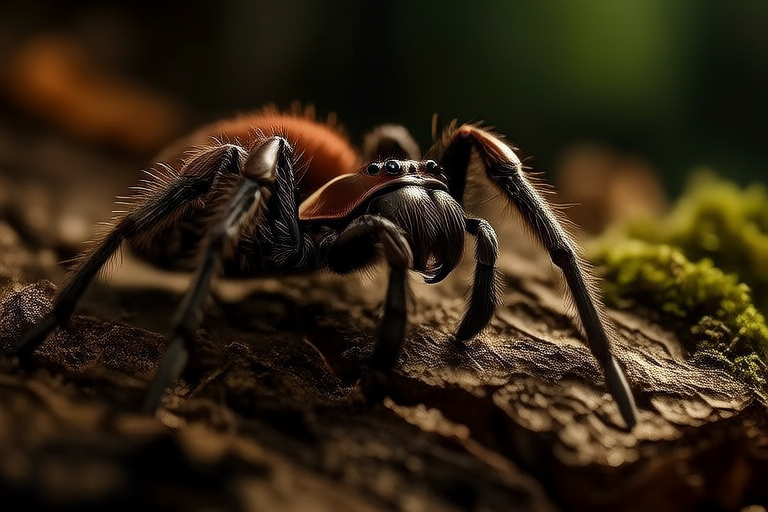How the Enigmatic Mexican Redknee Tarantula Became a Popular Pet
The Mexican redknee tarantula (Buthyrhaphidia smithi) has captivated the hearts of many pet enthusiasts around the world. This large, striking spider with its distinctive reddish-orange legs is more than just an exotic creature; it’s a fascinating subject that has seen a surge in popularity as a pet. This article delves into the historical background, unique characteristics, care requirements, debunking common myths, the rise in popularity, and essential tips for those considering adopting one of these arachnids.
Historical Background
The history of the Mexican redknee tarantula as a pet dates back several decades. Originally found in the wilds of Mexico, particularly in the mountainous regions of Guerrero and Oaxaca, these spiders were first introduced to the pet trade in the mid-20th century. Initially, they were rare and expensive due to their limited availability and strict export regulations from Mexico. However, over time, captive breeding programs have made them more accessible to hobbyists worldwide.
Unique Characteristics
Mexican redknees are known for their vibrant colors and docile temperament. They grow up to six inches in leg span, making them one of the largest species commonly kept as pets. Their most notable feature is the reddish-orange patella (knee) section of their legs, which gives them their name. These spiders also possess urticating hairs, small barbed structures on their abdomen used for defense against predators.
Care Requirements
Proper care is crucial for keeping your Mexican redknee tarantula healthy and happy. A suitable enclosure should mimic their natural habitat, providing a humid environment with plenty of hiding spots. The substrate can be made of coconut fiber or soil, ensuring adequate moisture retention. Temperature should range between 75°F and 85°F (24°C to 29°C), while humidity levels should stay around 60-70%. Feeding consists mainly of crickets and other insects, fed approximately once every week or two depending on the spider’s size and activity level.
Myths vs Realities
One common misconception about Mexican redknees is that they are aggressive. In reality, they are quite docile and rarely bite unless provoked. Another myth is that handling these spiders is dangerous. While direct contact should be minimized to avoid stressing the animal, gentle handling under controlled conditions can be done safely. Additionally, some believe that these spiders require constant attention, but in truth, they thrive when left undisturbed.
Rise in Popularity
The rise in popularity of Mexican redknee tarantulas as pets can be attributed to several factors. Firstly, advancements in breeding techniques have led to increased availability at reasonable prices. Secondly, there has been a growing interest in exotic pets among enthusiasts looking for something unique yet manageable compared to traditional animals like dogs or cats. Lastly, educational resources such as books, online forums, and community events have helped demystify these creatures, fostering greater understanding and appreciation.
Tips for Potential Owners
- Research Thoroughly: Before bringing home any pet, especially an unconventional one like a tarantula, extensive research is necessary. Understand their dietary needs, housing preferences, and behavioral patterns.
- Start Small: If you’re new to keeping spiders, consider starting with smaller species before moving onto larger ones like the Mexican redknee.
- Prepare Appropriately: Ensure your living space is prepared for a pet tarantula. This includes having appropriate enclosures ready along with all necessary supplies.
- Join Communities: Engaging with communities of fellow enthusiasts can provide invaluable advice and support throughout your journey.
In conclusion, the Mexican redknee tarantula stands out not only because of its striking appearance but also due to its manageable nature as a pet. By understanding its origins, appreciating its unique traits, meeting its care needs, dispelling common misconceptions, and following best practices, prospective owners can enjoy a rewarding experience with this enigmatic arachnid.
